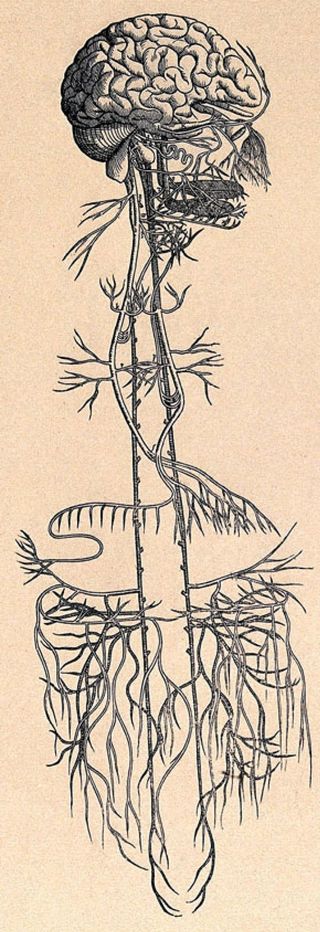
Source: Lightspring/Shutterstock
Bidirectional connections between the digestive system and the brain create a feedback loop that may drive food-seeking behaviors, according to a recent study in mice.
This newly discovered “digestive-brain axis” appears to play a vital role in learning behaviors related to food choices. These findings (Fernandes et al., 2020) were published on April 6 in the journal Neuron.
This research was conducted at the Champalimaud Centre for the Unknown in Lisbon, Portugal. The research group was led by Albino Oliveira-Maia, who directs the neuropsychiatry unit at the Champalimaud Centre and collaborates with scientists in the Champalimaud Programme to develop novel research. Ana Fernandes is the first author of this study. Rui Costa is the study’s senior author.
Some of the research questions that led to this newly identified digestive-brain axis that appears to control food choices included: How does information about the nutritional and caloric value of food reach the brain? Where in the brain does the vagus nerve send post-ingestive signals from the digestive system? Are neurons involved in the post-ingestive learning process?
To answer these questions, Oliveira-Maia and colleagues conducted a series of elaborate experiments in mice that focused on the vagus nerve.

This early anatomical drawing of the vagus nerve shows multiple branches (including the hepatic branch) of the tenth cranial nerve that send bi-directional signals from the gut to the brain and back again.
Source: Wellcome Library/Public Domain
What is the vagus nerve? “This is a long nerve that forms bidirectional connections between the brain and multiple internal organs,” Oliveira-Maia said in a news release. “Results from my previous work indicated that a specific branch of the vagus nerve might be involved.” This research found that the hepatic branch of the vagus nerve appears to relay post-ingestive signals from the gut to the brain.
What is the hepatic branch of the vagus nerve? Hepatic means “relating to the liver.” Different branches of the vagus nerve transmit information from various organs to the brain. The hepatic branch conveys information from the liver to the brain, hence its name. Notably, recent research (Yamada et al., 2017) from Japan suggests that the hepatic branches’ central projections may extend beyond just the liver.
As Daisuke Yamada and co-authors explain, “The common hepatic branch of the vagus (CHBV) is one of the main vagus nerve branches, and consists of heterogeneous neuronal fibers that innervate multiple peripheral organs such as the bile duct, portal vein, paraganglia, and gastroduodenal tract.”
Where in the brain are post-ingestive signals sent to by the hepatic branch of the vagus nerve? To answer this question, Oliveira-Maia and colleagues designed a series of experiments that focused on vagus-mediated dopamine neuron activity in the ventral tegmental area (VTA).
The VTA “reward center” is a central part of the mesolimbic pathway that responds to rewarding stimuli. A key objective of this research was to explore if vagus-mediated dopamine neurons are involved in post-ingestive learning that controls food-seeking behavior.
Oliveira-Maia and his team found that the vagus nerve appears to modulate both dopamine neuron activity and food-seeking behaviors.
As the authors explain, “Here we report a causal connection between post-ingestive sucrose sensing and vagus-mediated dopamine neuron activity in the VTA, supporting food-seeking. These data establish a necessary role of vagus-mediated dopamine neuron activity in post-ingestive dependent food-seeking, which is independent of taste signaling.”
“An important component of the study was the discovery that dopamine neurons were involved in this new learning process,” Rui Costa said. “This study shows that [vagus-mediated dopamine] neurons are activated when foods reach the stomach and intestine. Furthermore, we showed that the activation of dopamine neurons when nutrients reach the gut is critical for driving food-seeking behaviors.”
Oliveira-Maia believes his team’s discovery of the digestive-brain axis in mice and identifying the role of vagus-mediated dopamine neuron activity in their food-seeking behavior may apply to humans, too. “It’s very early to say what will come from this work down the line. Still, the inspiration regarding the relationship between dopamine receptors and is a big part of why we did this work in the first place,” he concluded.